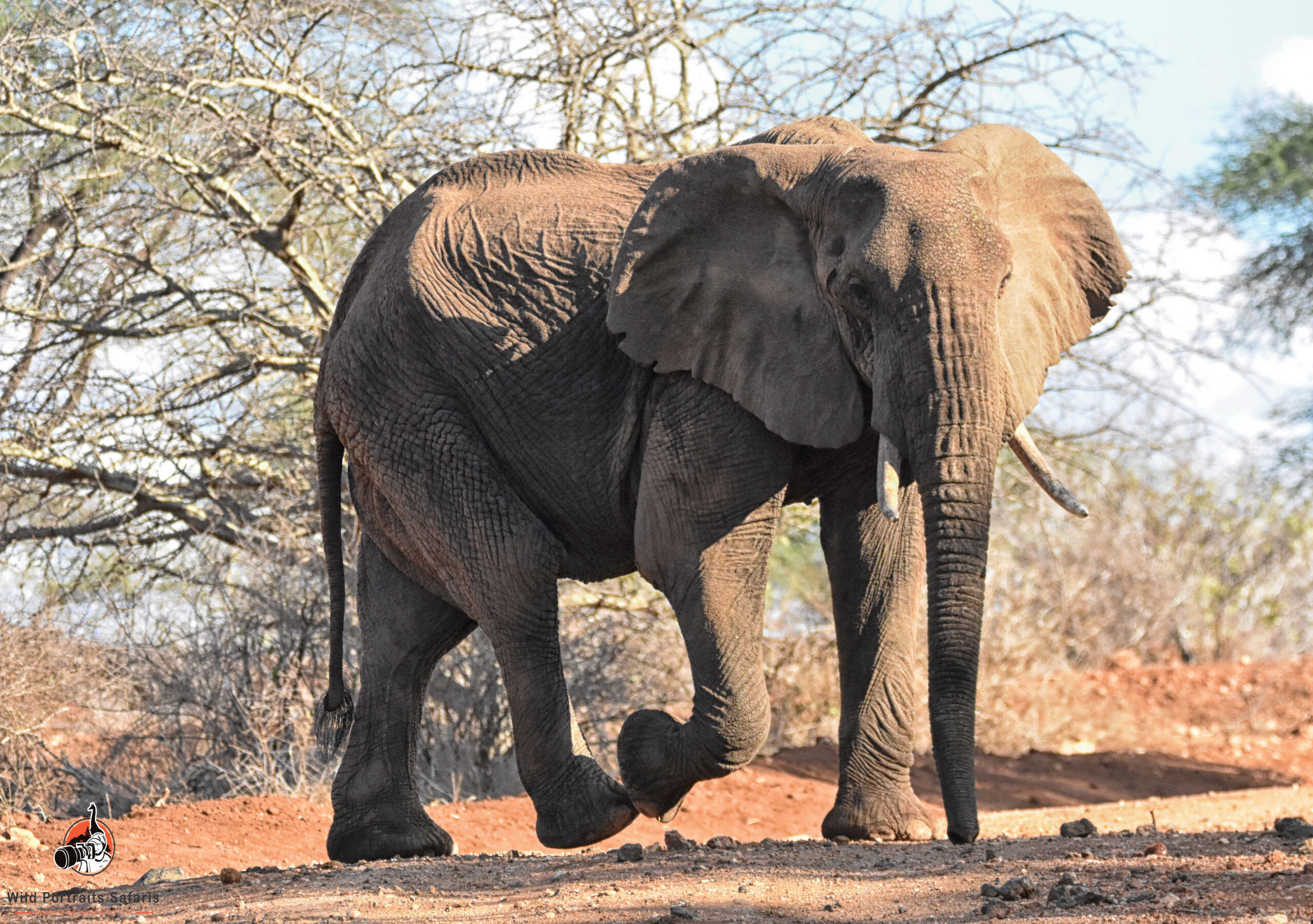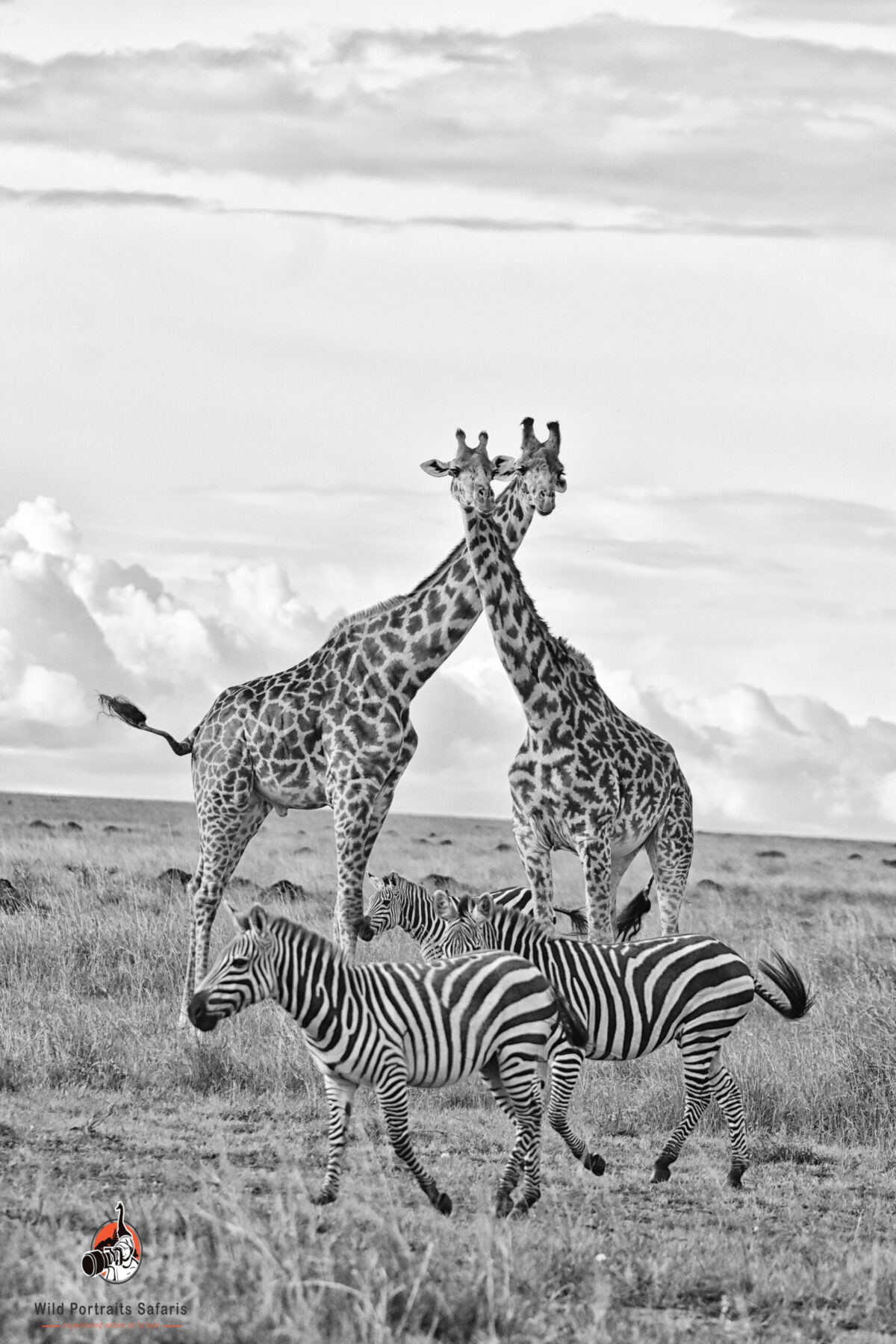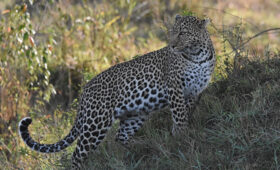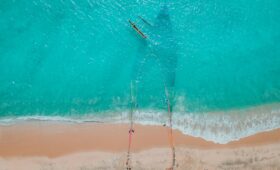Best 6 Places to see the African Elephant
The African elephant is one of the most magnificent creatures in nature. A biological mystical animal and the largest land mammal. The African Elephant is slightly bigger than the Asian elephant, has bigger ears and both male and females have tusks.
There are two species of the African Elephant, the savanna elephant which are larger and roam the sub-Saharan Africa, the smaller forest elephant dwells in the forests of West and central Africa. The forest elephants are listed as critically endangered while the savanna cousins are listed as endangered in the International Union for the conservation of Nature.
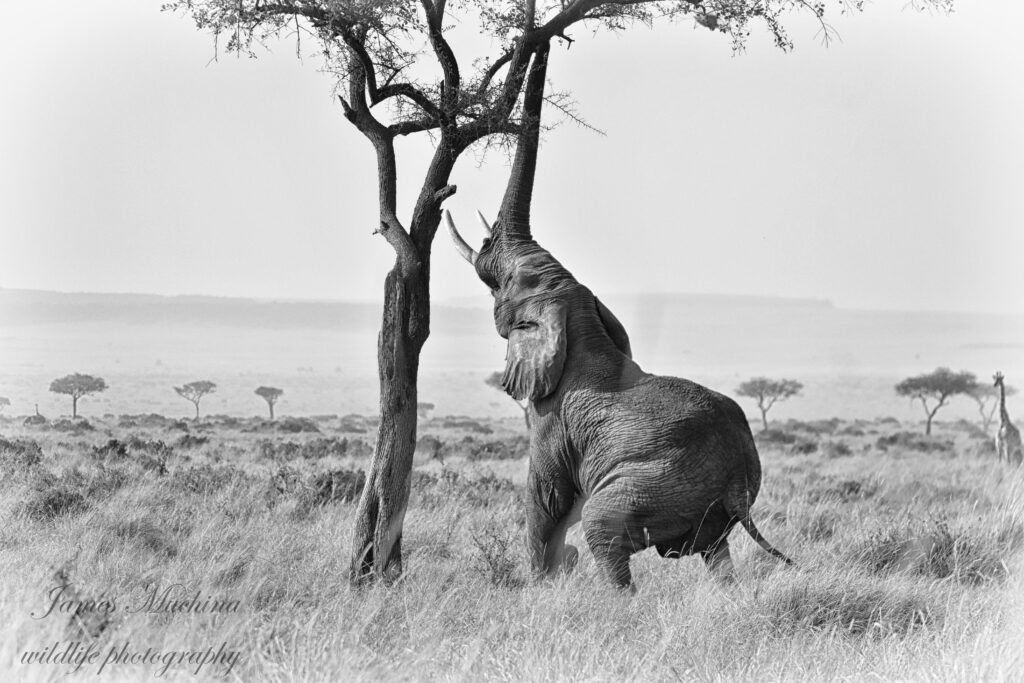
In East Africa we have the endangered savannah elephant. They can weigh over 5 tons and have an average lifespan of 70 years. The Bulls tend to be bigger than the cows and thus much heavier.
They have different Skin texture, from the thick, wrinkled tough, folds on the back and forehead. Then soft, thinner, pliable skin of the breast, ears, belly, and underside of the trunk. The tough skin has a few, scattered, bristly hairs, while the thinner skin on the trunk, chin, ear rims, eyelids, knees, wrists, and tip of the tail has somewhat thicker hair. They take care of their skin by skin taking showers, dusting with sand, and full-bodied mud-packs which are later rubbed off against a tree or boulder, removing dead skin as well. These usually helps in keeping the skin moist, supple, protected from the sun and insects, and also aid in keeping the animal cool. This is also the main reason why you get different colors o n the elephant depending on the soil color of their habitat. A perfect example of this is the contrast in color between the red colored elephants of Tsavo East where the soil is rich in iron versus the grey to dark grey elephants in the Masai Mara Serengeti ecosystem where the main soil type is the black cotton soil.
More Interesting facts about the African Elephant
- Need approximately 150 kgs of food per day but a 4-ton bull and above can feed approximately 300kgs per day
- Drinks approximately 200 lits of water
- Has six sets of teeth in its life
- Permanent tusks erupt when males are about 1.5 years old and females approximately 2 years
- Temporal glands, situated behind the eyes below the ear secrete a strong-smelling fluid when the elephant is excited or under stress.
- Do not sweat but use their ears (with a network of veins behind ears) to lower blood temperature, or splash water, mud or sand over their bodies.
- Low frequencies transmitted through the ground can be picked upthrough sensitive feet
- The feet have a thick pad of fat and connective tissue at the heel, which functions as a shock absorber
- Elephants can not jump due to their weight and size
- Elephant has the largest brin of any mammal weighing approximately five kgs
- Heart beats at approximately 30 beats per minute compared to the humans 70
- Tusks are modified incisors
The key stone species
The African elephant plays a vital role in the ecosystems they dwell in. Due to their poor digestive system their dung is filled with seeds thus helping in their distribution. The seeds also attract dung beetles who in turn attract different species of birds like the hornbills. During the dry season at the dry river beds, they use their trunks to dig new watering holes having a big impact on the other wildlife as well. A perfect example for this is at the Samburu National reserve a great destination in northern Kenya for elephant lovers. In the open savanna the eat samplings and uproot trees leaving it open for other species to thrive. In the forests they create room for new growth as the bring down trees and shrubs. These also helps in creating path ways for the other animals like gazelles.
Best places to see Magnificent African elephant in their Natural habitat in Kenya
Amboseli National Park
With over 1500 elephants Amboseli National park is definitely on of the best safari destinations to watch the Africa elephant. It is a semi-arid ecosystem but the park acts like an oasis in the desert. Amboseli has several swamps that are served with water from Africa’s highest Mountain, the Kilimanjaro. Rain water and melting snow percolates through porous rock emerging in the life-giving swamps of Amboseli. This attracts not only the elephants but also other herbivores as well. The elephants normally spend their days in the swamp feeding on the soft swamp grass, keeping cool and wallowing in the hot unforgiving Amboseli swamp. Amboseli means the dusty plains making it a perfect place for the elephant skin care therapy as the splash the soft volcanic soils of their gigantic bodies. Every evening they leave the swamps giving you perfect up-close moments as they go for their night foliage. The same is repeated every morning as they come back to the swamps. Taking a 3 Days scenic Amboseli Safari tour or in combination with other parks that give the best African elephant safari experience is a must do on your safari to Kenya.
Tsavo East National Park
The Kenya wildlife service has christened it the “theatre of the wild” and rightly so. It is Kenya’s biggest park measuring 13,747Km sq. and is famous for the “red elephants of Tsavo” and the “Man eaters” which are featured in the famous movie the ghost and the darkness. If you love big tuskers Tsavo East is your plug. It plays host to over 12000 elephants and ten percent of the big African elephant tuskers. The red elephants are world famous and they get this from the iron rich red volcanic soil. Tsavo is huge and has vast areas at the disposal of the elephants making it an ideal habitat to thrive in. The best time to visit Tsavo East is all year round except for the long rains period in April and May. The best spots and places to see the elephants in activity are at the water holes. This act as refuges especially during the dry months.
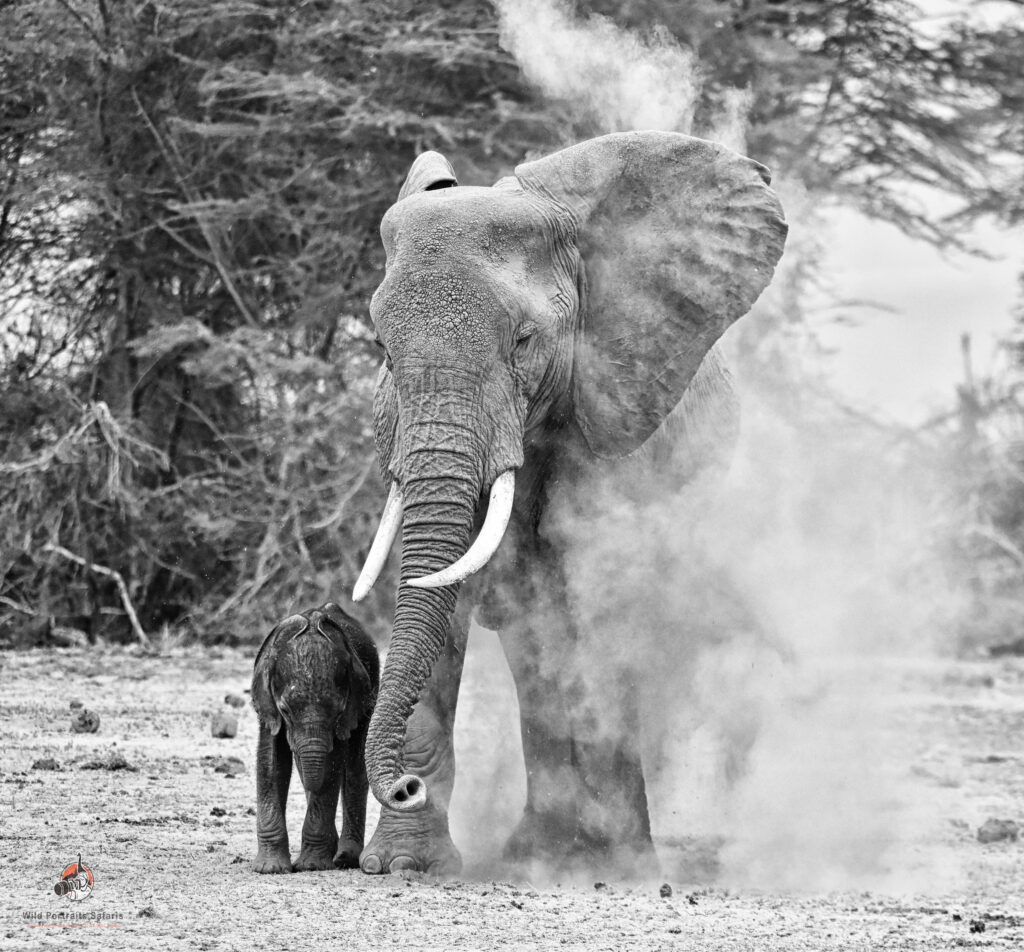
Samburu National Reserve
Samburu is an ideal elephant safari destination. Located North of the equator, Samburu and buffalo reserves are divided by the Ewaso Ng’iro river. It is this river that runs from the central highlands, cutting through this amazing safari destination and winding up at the Lorian swamp. It is a sight to behold watching elephant families crossing the river, mud wallowing at the banks or digging up water holes during the dry season when the river is dry. It is common and lovely to see herds of elephant families coming down from the adjacent hills mid-morning and the excitement of the elephant calves once they reach the river. Samburu elephant photography safari should be a bucket list for any wildlife photographer interested in elephants. The different contrast in vegetation with the hilly backgrounds is just the perfect setting. The reserve is home to the Samburu special five which are, the grevys zebra, the gerenuk, the Somali ostrich the oryx and the reticulated giraffe. Samburu is one of the best places to spot the elusive leopard. The Best time to visit Samburu is Jan to March and July to December.
The Masai Mara
Though this magnificent safari destination is famous for the big cats and the wildebeest migration, it is also home to the African Elephant. The Masai Mara savanna ecosystem is one of the few safari destinations that you can photograph elephants in the open plains with just an open “grass ocean” Occasionally get them wallowing in the small mud pools.
Reteti Elephant Sanctuary
This is a community owned elephant sanctuary. The Samburu community owned sanctuary cares for orphaned calves with the aim of releasing them back to the wild. The best time to visit Reteti is all year round other than during April and May when the country is experiencing the long rains.
Taita Hills Wildlife Sanctuary
The sanctuary is 110 sq.km and is adjacent to the Tsavo west National Park. This acts as a dispersal area for the elephants once they leave the Tsavo West and is an important migratory corridor for wildlife. With a mountainous topography the setting for elephant photography sets it just right, the views of Mount Kilimanjaro ,the Uluguru mountains are just epic with the magnificent African elephants within the same frame. In this sanctuary is also the famous Salt lick lodge that overlooks a water hole. This attracts herds of elephants especially during the dry season. They do water a watch chamber where you can view the elephants and other wildlife as they drink.
The African elephant is a mystic and majestic animal, below are some of the elephant safari adventure tours
We can also tailor make a fantastic elephant watching adventure safari for you

